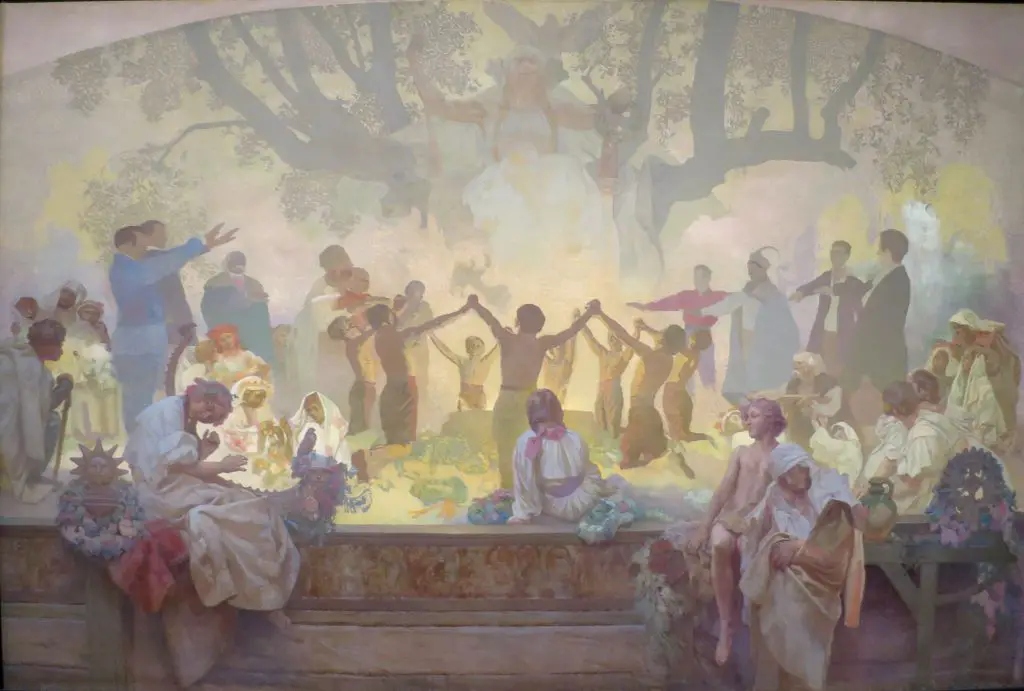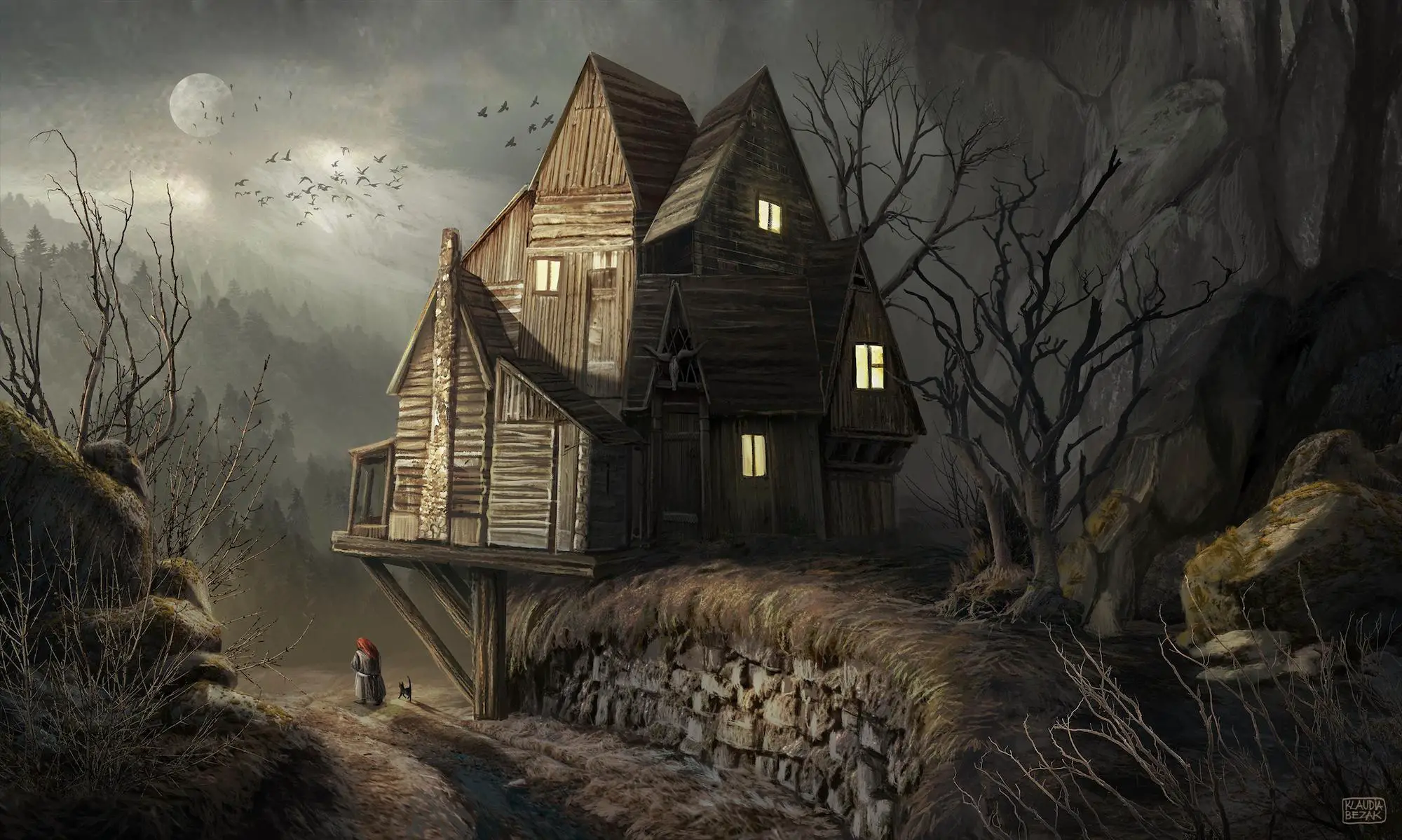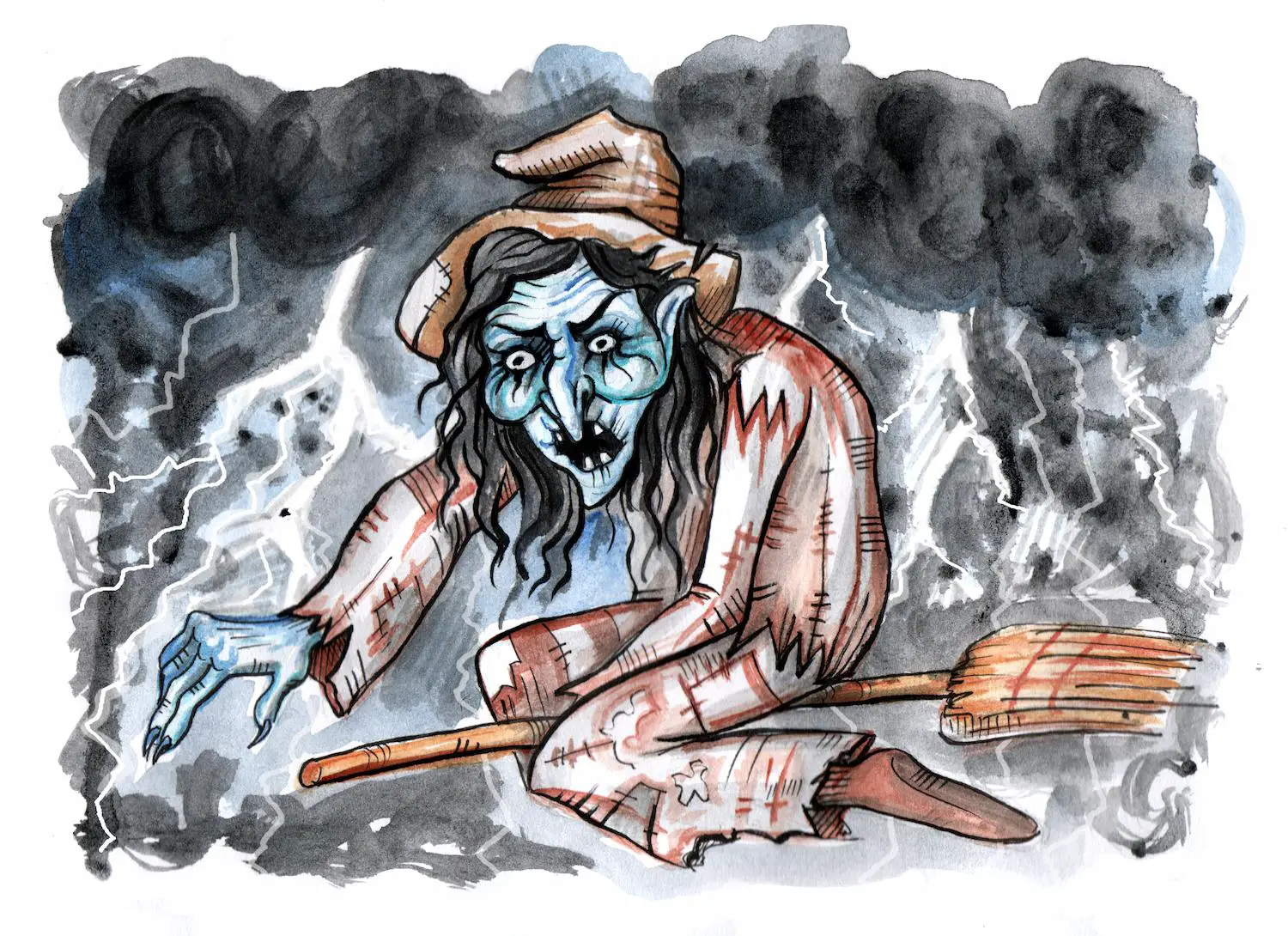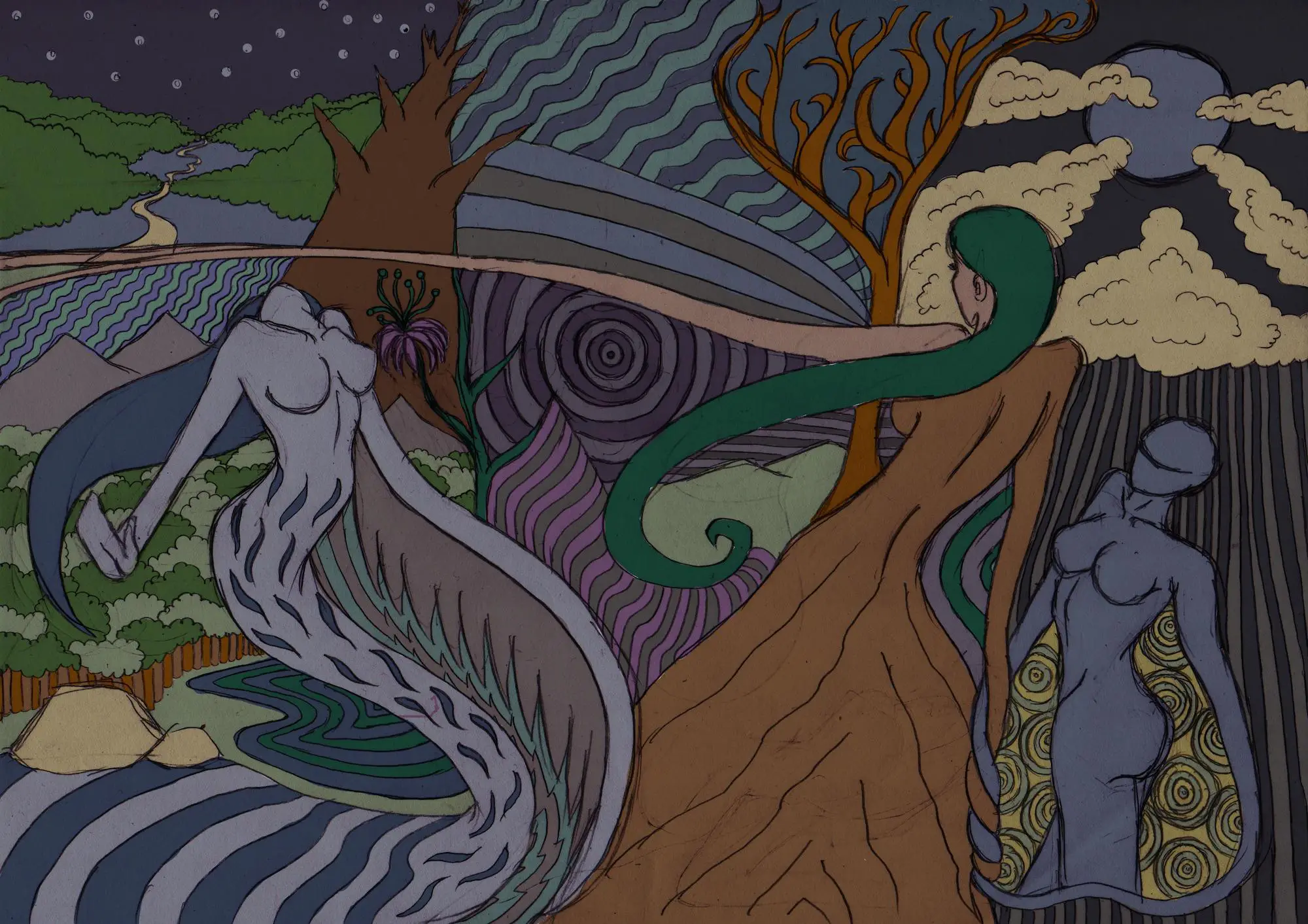We all know about the Greek Gods. They are mainstream deities, let’s face it. But what about Slavic pantheon and its miraculous complexities?
There is no better way of entering into a strange and yet mesmerizing Slavic world than reading about the Slavic tree of life, the Creation myth and many Slavic cults.
If you are also interested in mythological places, check out this article: 7 Slavic Mythological Places.
If you ever wondered what is the significance of trees in Slavic mythology or what are some of the most interesting Slavic rituals, then you are in the right place.
In this article, I am going to cover all of it. So sit tight and keep reading.
Table of Contents
The Tree of Life in Slavic Mythology

It is common knowledge that Greek and Roman myths have reigned supreme when it comes to mythological references on a global level.
However, the forgotten realm of Slavic mythology has a lot to offer, as well.
Today, Slavic people populate a large part of the territory of South-Eastern Europe. They span across 13 countries, sharing a cultural tradition that involves rich layers of mythology [1].
According to historians and folklorists, Slavic mythology has been evolving for over 3000 years, (relying on the so-called “natural dualism” as its main premise).
Darkness and light, female and male, summer and winter, were the main themes in the culture of the ancient Slavic people. Even the supreme god Rod has its counterpart.
The Belief System
The foundation of the belief system of the early Slavs was their connection with nature and natural forces.
It is believed that instead of temples, the ancient Slavs held gatherings around oak trees. They believed that oak trees are dwelling places for souls and often danced around them during festivals and celebrations.
The Slavic Tree of Life can be seen as a sacral natural object made out of three parts (or division of the Slavic world).
The bottom or the roots symbolized the Underworld, the middle or the stem was actually the Realm of Man (or the earthly world), while the top or the crown, was the Slavic Olympus, the heavenly world of gods and the divine.
Trees had a special place in all of the Slavic mythology (in general) and were a part of their oldest traditions.
The Cult of the Trees
One of the oldest traditions in Slavic folklore was the so-called “Cult of the Trees”. This cult emerged in the 10th century and involved a ritual that honoured life and death.
For the early Slavs, every tree was related to a certain deity to whom they prayed, confessed, and gave sacrifices.
The general idea was that every year, a tree dies and then returns to life, thus symbolizing the circle of life and cosmic rebirth.
God Perun and the Tree
In the imagery of the Slavic World Tree, Perun, the Slavic god of thunder sits on the crown of the tree, often portrayed as an eagle.
The bottom, or the roots, were reserved for the god Volos who was represented as a serpent.
It was believed that Perun protected people and their homes (during storms) from Volos, who disguised himself as a serpent and hid in their house in order to cause havoc.
The Great Idea of Duality
The idea of omnipresent duality was included in this cult too, thus the Slavs divided the trees according to good or holy and bad or demonic.
The good trees were those to whom they could pray and confess to.
The fact that they believed in communication with trees says a lot about their inner faith and the power of the “Cult of trees”.
The bad, demonic trees, on the other hand, were those that were used during dark magic rituals and it was believed that they had demons inside of them.
The Oak Tree Worship in Slavic Culture
What kind of tree is the Tree of Life? Well, according to folklorists, the Slavs believed that the oak tree was, in fact, the Tree of Life (or the so-called World Tree).
The oak was a symbol of all gods and Slavs believed that it has a spirit and a soul.
According to some explanations, the roots of the oak tree were imagined as the home of the dead ancestors, the stem was the present life, while the branches and the leaves represented the offspring and the future generations.
It is believed that the Slavic people used the oak trees as some sort of primitive temple (because they believed that oak trees were connected to the gods).
Most of these temples were deep in the forest and were often fenced in order to be marked and protected as something that was sacred and valuable to the Slavic people.
Rituals
The tribes would gather in front of the World Tree in order to perform their rituals and processions. The oak tree was seen as a divine place, whose environment mustn’t be disrespected.
Killings and any other kind of violent acts were forbidden in front or near the World Tree (as it was the holiest place).
In addition, the Slavs believed that fairies lived in the crown of the oak (that represented fertility and happiness).
Also, it was believed that if anyone harms the tree, they will be forever cursed with an ill fortune (or even death).
The oak tree and the Slavic people have a strong bond, even today, despite the fact that in all of the Slavic countries, Christianity is the main religion.
The oak trees are used in numerous rituals (as a religious symbol preserved from the pre-Christian, or so-called pagan, period).
Badnik Holiday
On the night before the celebration of the Orthodox Christmas, also known as “Badnik” or “Badnjak” (Badnik is, in fact, a branch of an oak tree), people gather around a big lit fire and every home celebrates this evening with a piece of oak-made ornament.
Nevertheless, the oak tree is related to the Slavic pagan tradition and a central element of pagan religiosity.
In Slavic folklore, oak trees are often mentioned. Because oak trees can live for hundreds of years, they were considered as protectors of the people, their connection to the gods and nature.
The faith in the oak tree was so big that there was a belief that if an oak tree falls, one shouldn’t touch it. Some of these beliefs have survived up to today.
For example, there was a case in one Slavic country when an oak tree fell on a path. This place was fenced and a new path was built for pedestrians to walk on.
Many of the Slavic legends mention a secret treasure that is hidden in the oak tree and, reportedly, ancient Slavs kept their valuables in the holes of this tree.
The Tree of Life and the Alatyr Rock
In Slavic folklore, there is a belief that all the rivers flow from one source that is found under the rock Alatyr on the imaginary island Buyan. Upon this rock stands the World Tree (with the Underworld being where its roots are).
In Russian folklore, the Alatyr is a holy stone and the “father of all stones”, “the navel of the world” and the “source of the earth”.
The name “Alatyr” is mainly present in East Slavic sources but it also exists in many other Slavic mythological interpretations. It is mentioned in stories as a powerful and everlasting force.
In the “Dove Book”, a medieval Russian spiritual verse, the Alatyr is associated with an altar that is said to have been placed in the navel of the world.
It was believed that the World Tree fed on the magical and healing stone which thus gave food to the whole world.
The Tree of Life as Inspiration
It seems that despite its religious, philosophical, or cultural source, the World Tree is a symbol that evokes inspiration and creative work (even today).
For example, the great symbolist artist from the late nineteenth century, Gustav Klimt, painted his version of this tree and named the painting “The Tree of Life, Stoclet Frieze”.
This painting gained huge popularity and inspired the facade of the “Tree House” later built by the College of Art and Design in Boston, Massachusetts.
During the Age of Discovery, the tree of life was a desired object in the expeditions throughout Central America. The Spanish conquistadores believed that it would provide them gifts of eternal life and that it would free Spain and the queen from the tyranny of religious inquisitions.
Movies
In 2006, the director Darren Aronofsky released the film “The Fountain” which included the Judeo-Christian Tree of Life as one of the guiding elements in the plot. In 2009, the director Alex Proyas created the film “Knowing” which also features the World Tree.
One of the most popular examples of the use of this symbol is also the film called “The Tree of Life” by the director Terrence Malick, which meditatively creates a chronicle of the origins and the meaning of life through the childhood memories of one man.
He also combines these elements with powerful and rich imagery of the origins of the universe and the inception of life on Earth.
The Grandmother Willow in the story of Pochahontas is another reference to the World Tree.
The Grandmother is presented as a spiritual adviser who is wise, knows a lot about healing and helps Pochahontas to face the challenges laid in front of her. But, at the same time, she encourages her to save John Smith in order to remain faithful to the love she feels for him.
In the Animal Kingdom (of Disney theme park), there is an artificial tree which is dubbed as the “Tree of Life” with over 300 carvings of different animal species.
In Utah Bonneville Salt Flats there is an 87-foot high sculpture known as the “Tree of Life” while in Bahrain there is a real 9.57-meters-high tree that carries the same name.
A lesser-known fact is that the Tule tree (in Aztec mythology) is actually associated with what in other cultures is known as the World Tree and today it can be found in Oaxaca, Mexico.
Trees in World Mythologies, Religions and Philosophy
World mythologies, religions, and philosophical traditions regard the tree of life as one of the essential fundamental epistemological themes, i.e. as an archetype.
The concept of the tree of life is present in almost all mythological systems in the world and it is associated with the so-called “sacred tree” (present in the Ancient Greek and Hindu mythology, but also in less popular religions such as Shinto in Japan and Confucianism in China) [2].
Trees are significant elements in many of the world’s mythologies and they are regarded as natural objects of wisdom (with a deep meaning, and sacral symbolism).
Human beings have associated trees with cycles of death and rebirth for a long period of time.
Ancient Mesopotamia and the Tree of Life
One of the earliest civilizations in Ancient Mesopotamia regarded the Tree of Life as an important religious symbol that was often portrayed together with humans or eagle-headed genies.
The historians of Assyriology attributed the name “Tree of Life” to this notion (according to the modern scholars), though it was not mentioned in that exact context in the Assyrian findings.
However, it is interesting to mention that in the earliest surviving work of literature and the second oldest religious text, “The Epic of Gilgamesh”, Etana is on a quest for the so-called “Plant of Birth” which would grant him a son and provide him with fertility [3].
The evergreen trees (which stay green throughout the natural cycles) are observed as symbols of fertility, immortality, and eternity (yew tree is one of those trees).
People often debate about which tree is the Tree of Life, though currently, there is no single right answer to this question.
The image of the Tree of Life is present in many mythologies, for example, the sacred fig which is the tree of knowledge in Judaism and Christianity [4].
Trees are often regarded as homes of tree spirits and these are largely present in Germanic mythology and Celtic polytheism.
Moreover, the ancient Egyptian Book of the Dead is also a scripture that mentions the sycamore trees as part of the scenery where the souls of the dead seek to find a divine response.
References
- https://worldpopulationreview.com/country-rankings/slavic-countries
- https://www.athenswalkingtours.gr/blog/index.php/2012/10/31/the-sacred-olive-tree/
- https://www.ancient.eu/article/224/the-myth-of-etana/
- https://www.pbs.org/wnet/nature/the-queen-of-trees-fig-trees-from-the-sacred-to-the-strangler/1353/













